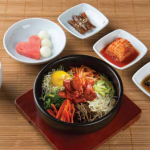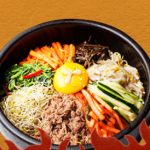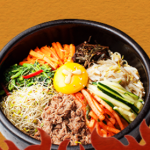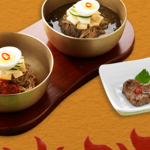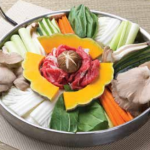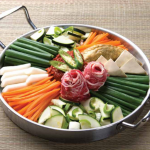Introduction
Step into the vibrant world of Korean cuisine, where the art of cooking is complete with an explosion of flavors. From sizzling barbecues to steaming hot stews, Korean dishes offer a harmonious blend of spices, aromas, and textures that will leave you craving for more. In this article, we will embark on a culinary journey, exploring the key ingredients that bring these delectable Korean delicacies to life.
Unveiling the Secrets of Korean Culinary Tradition
Korean cuisine, also known as Hansik, is renowned for its emphasis on balance and harmony. Each dish is a masterpiece that intertwines a plethora of ingredients to create a symphony of delightful sensations on your taste buds. Let’s explore some of the key players in this culinary marvel:
-
Gochujang – This red chili pepper paste is the soul of Korean cooking. It infuses an umami-rich, slightly spicy flavor to various dishes, adding depth and complexity. The combination of fermented soybeans, glutinous rice, and red chili peppers creates a spicy-sweet explosion of flavors.
-
Doenjang – A traditional Korean soybean paste, Doenjang is an essential seasoning agent in Korean cuisine. With its robust, earthy flavor, it plays a crucial role in soups, stews, and marinades. It’s often regarded as the backbone of Korean cooking, adding a distinct savory taste to every dish.
-
Sesame oil – Known as chamgireum, sesame oil is a staple ingredient that imparts a nutty, aromatic essence to Korean dishes. It serves as a finishing touch or a flavorful base for stir-fries, enhancing the overall taste and aroma of the food.
-
Kimchi – No Korean meal is complete without this quintessential side dish. Made from fermented vegetables, such as Napa cabbage or radishes, it offers a delightful blend of tanginess, spiciness, and umami. The complex flavors of Kimchi add depth to any dish and provide the perfect balance to a rich meal.
-
Gochugaru – The vibrant and coarse Korean red pepper flakes are a fiery addition to the Korean flavor profile. Used in various marinades, kimchi preparation, and in making spicy stews, gochugaru makes sure the dishes pack a punch, awakening your taste buds with its spicy heat.
-
Soy sauce – A classic and versatile ingredient, soy sauce adds a savory kick to Korean dishes. It enhances the natural flavors of the ingredients and acts as a vital seasoning agent, ensuring a well-balanced taste.
-
Galbi – Also known as Korean BBQ short ribs, galbi takes center stage in Korean grilling. Marinated in soy sauce, garlic, and sugar, these succulent and tender ribs burst with sweet and savory flavors, delighting meat lovers worldwide.
Conclusion
Korean cuisine is a testament to the mastery of flavors, utilizing a wide range of ingredients that harmonize to create extraordinary dining experiences. From the fiery notes of gochujang and gochugaru to the depth of Doenjang and the tanginess of Kimchi, Korean dishes tantalize your taste buds with every bite. Whether you’re a fan of meat, seafood, or vegetarian delights, you’ll discover a plethora of incredible dishes that showcase the richness and diversity of Korean culinary heritage.
Frequently Asked Questions
1. What is the best way to incorporate Gochujang into my dishes?
Gochujang can be used as a marinade for barbecue, a sauce for stir-fries, a dipping sauce, or even as a savory condiment for rice. Experiment with different recipes and find your favorite way to incorporate this versatile ingredient.
2. Can I substitute Doenjang with other soybean pastes?
While Doenjang is traditional Korean soybean paste, you can use Japanese miso as an alternative. However, keep in mind that miso has a slightly different flavor profile, so the taste of the dish may vary.
3. Is sesame oil used only for cooking?
Sesame oil is primarily used as a finishing oil to drizzle over cooked dishes or as a base for stir-fries. It is not suitable for deep-frying due to its low smoke point.
4. How long does it take to make Kimchi?
The fermentation process for Kimchi can take anywhere from a few days to several weeks, depending on the desired taste. However, it is readily available in most Korean grocery stores if you prefer to skip the waiting period.
5. Can you recommend a vegetarian Korean dish?
Bibimbap, a colorful mixed rice dish topped with assorted vegetables, is a popular vegetarian option. It can be customized to suit your tastes and preferences, making it a delightful and nutritious choice for vegetarians.
Sources:
– Korean Bapsang
– Korean Cuisine


